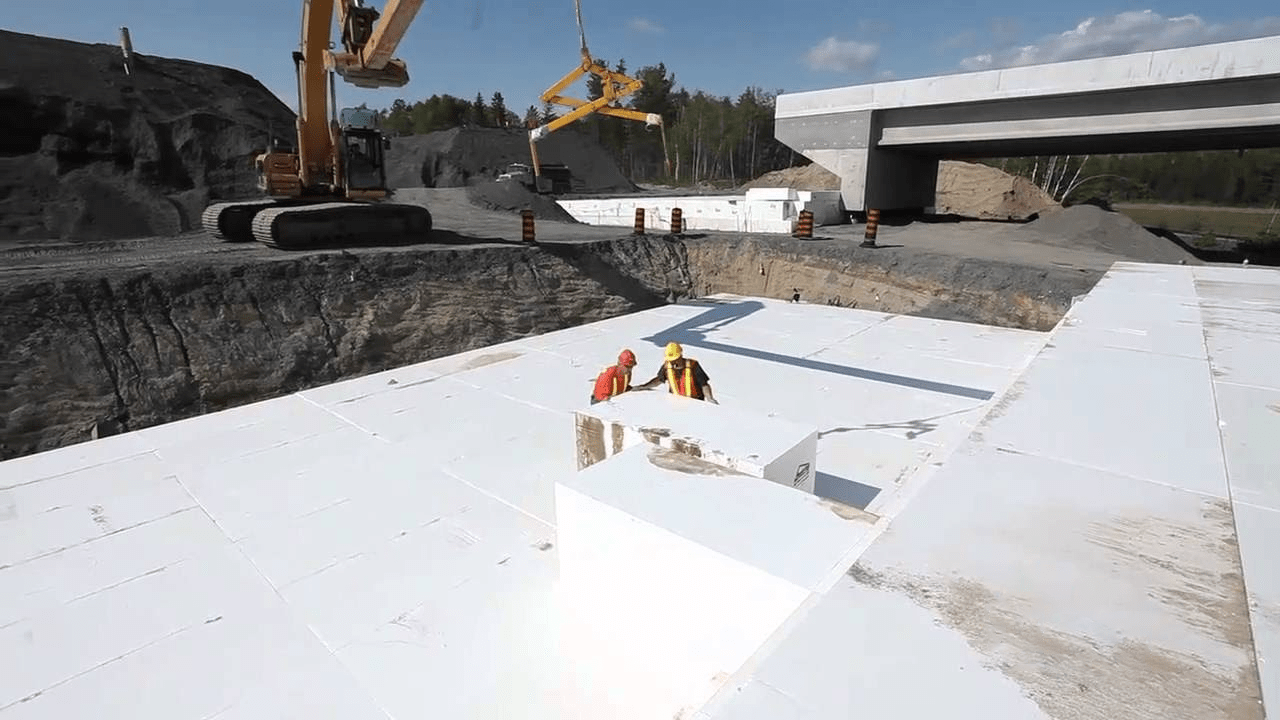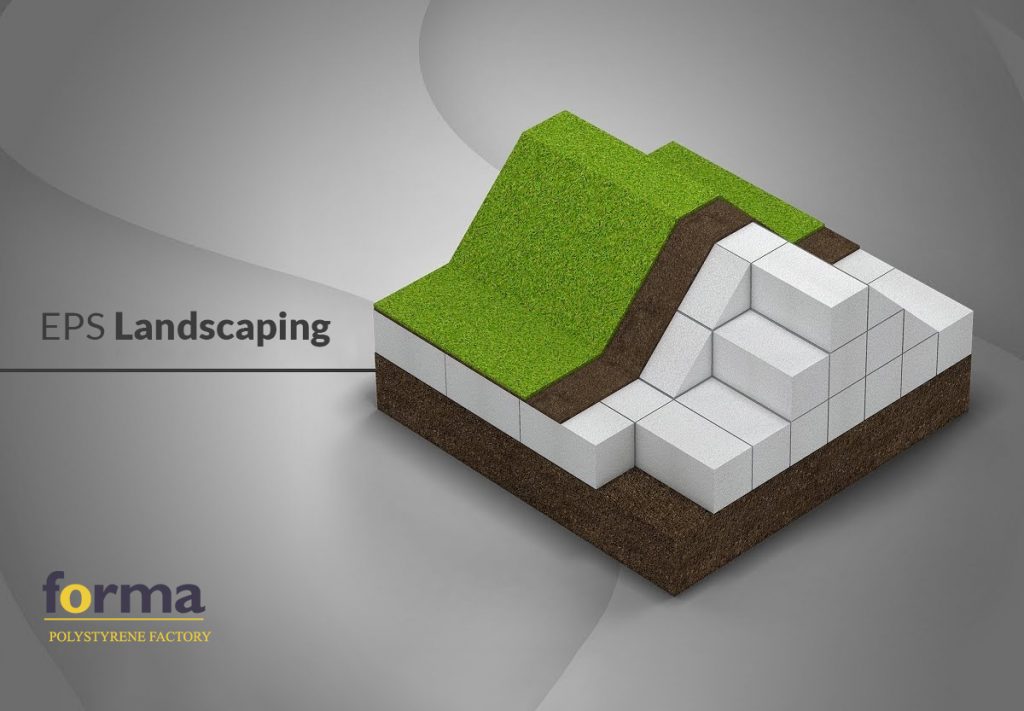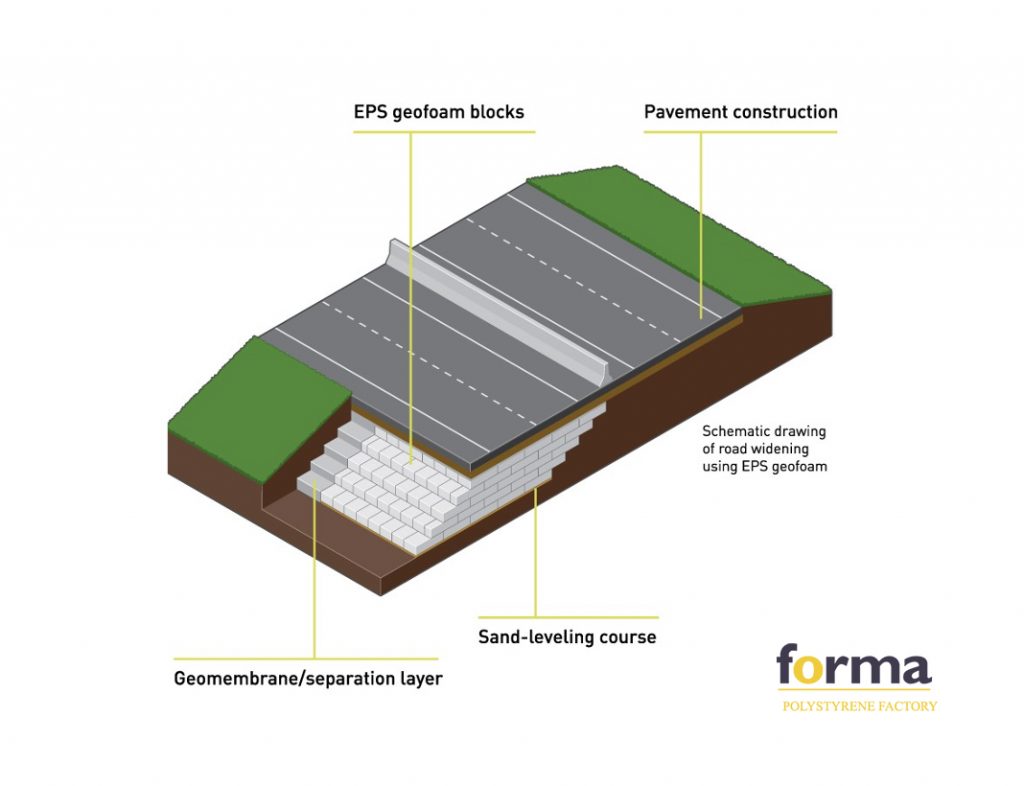The Application of Expanded Polystyrene in Landscaping

Expanded Polystyrene, also known as Styrofoam, is a fact of life, even though many people still don’t know about all the interesting applications it has in modern society. A form of versatile plastic, Expanded Polystyrene made its way into a variety of consumer products. It’s a hard and solid material while being lightweight at the same time.
It can be used on its own in many consumer applications, as is the case with ice boxes and vegetable boxes for example, or as protective packaging in a wide array of goods, ranging from electronics to furniture.
But did you know it also has a range of applications in landscaping? If you’re a keen gardener, you probably already know that polystyrene is in your flower pots and various gardening tools you might be using. However, the uses of polystyrene far exceed the manufacture of simple tools. In fact, your entire garden might be sitting on Expanded Polystyrene.
Expanded Polystyrene has a very good compressive strength while being very light compared to soil and hence provides many advantages when used in geofoam filling applications.
Here’s what you need to know about the application of expanded polystyrene in landscaping.
How is Geofoam Used in Landscaping and Construction?

For the purposes of landscaping and construction, Expandable Polystyrene is molded into Expanded Polystyrene (EPS) blocks. These EPS blocks are called as well geofoam and they are the end product of molding expandable polystyrene beads that is the raw material for EPS.
Expanded polystyrene (EPS) is a landscaping building block that can serve as a strong foundation that also happens to be eco-friendly. Geofoam is 100 times lighter than soil while providing good enough strength to take on traffic and landscaping loads.
Since EPS has low thermal conductivity and outstanding thermal insulation properties, it’s one of the main materials used for insulation in construction.
Expanded Polystyrene Blocks

The end results of the EPS production are rectangular expanded polystyrene blocks. They go into various landscaping projects and can be cut into insulation sheets, or even void filling cylinders. EPS blocks are flame retardant, environmentally friendly, and lightweight objects with low moisture and water absorption.
Besides being used for making EPS Geofoam and other foam products, EPS blocks are used in floor-raising or as a formwork solution to achieve various difficult shapes.
EPS are the perfect material in that sense – they’re more than 95% air. They also usually don’t have harmful chemicals in them, making the blocks entirely risk-free for the environment. To top it all off, the transformation process consumes little energy and does not generate waste.
The blocks aren’t chemically reactive, meaning they don’t interrupt any natural processes that are a crucial part of all sustainable practices. They even allow for fungi and bacteria to grow on them.
Moreover, EPS blocks are not biodegradable, which means they won’t dissolve and contaminate the air or water with gases or any soluble substances. Of course, they are 100% recyclable!
In practice, EPS blocks are excellent and sustainable tools in various landscaping projects such as green roofs, outdoor decorations, gardens, and above-ground insulation.
Lightweight terrain and terracing
Geofoam can be used to create various landscapes and even hills. Since it’s about a hundred times lighter than soil, it doesn’t add any unnecessary weight to structures below it, such as parking lots.
You can also place geofoam in elevated terrace areas for the very same reason – to ensure there’s no excess weight on foundation soils.
Lightweight fill against buildings
EPS geofoam is often used as a retaining wall backfill. The purpose of such a structure is to hold or retain soil. By using lightweight material such as geofoam, you prevent any soil settlement from occurring. It also provides less lateral pressure.
Of course, since geofoam is a closed-cell material, it won’t rot or seep into the ground.
Protective berms against important facilities
One of the more interesting applications of geofoam includes perimeter flood-protection berms. Geofoam allows for much steeper embankments than other, heavyweight fill materials.
Among other things, it’s used in the design of sound barriers, helping reduce the noise coming from highways or any other sources impacting living areas.
Floor elevations and concrete void fill
With geofoam, you can elevate floors without overburdening any other structures below it. For example, if there’s a utility tunnel running beneath the floor, geofoam can help reduce soil pressure on the ceiling and the wall, preventing any potential structural damage.
The same goes for concrete void fills. Geofoam can help reduce the weight on the structures below and fill in for architectural concrete.
Green roofs and parking structures
Geofoam is far less expensive than extruded polystyrene, making it the number one solution for structuring and layering of green roofs and parking structures alike.
Green roofs can almost double the lifespan of a roof and help with the heating and cooling costs. Geofoam makes green roofs possible with its low-cost installation, excellent water absorption capabilities, and variable densities. Moreover, contouring has never been easier than with geofoam.
EPS and Sustainable Landscaping
Sustainable landscaping design is the one that conforms to its natural surroundings. It just takes a certain kind of input such as water or fertilizer that is naturally available. Sustainable practices involve taking only as many resources as the local nature can provide, without wasting anything.
A sustainable landscape exists in harmony with the local ecosystem. It is diverse enough to remain completely resilient in case of a natural disaster. A sustainable landscape requires minimal effort to maintain. Since such a landscape collaborates with its natural surroundings, it basically maintains itself. However, depending on the local ecology, there’s always a degree of human involvement needed.
EPS blocks apply to all of the above. Seeing as how they’re recyclable, non-biodegradable, and easy to maintain, they’re the perfect material for environmentally friendly landscaping.
The Best Landscaping Material Available
Expanded polystyrene is the go-to material for creative and inspired landscaping professionals who care about the environment. Given all the advantages of EPS over expensive (and sometimes even harmful) landscaping methods, it’s imperative to use it in any future projects.
You’ll be investing in a safe, eco-friendly material that’s highly durable. It will decorate and beautify your landscape in the years to come.
